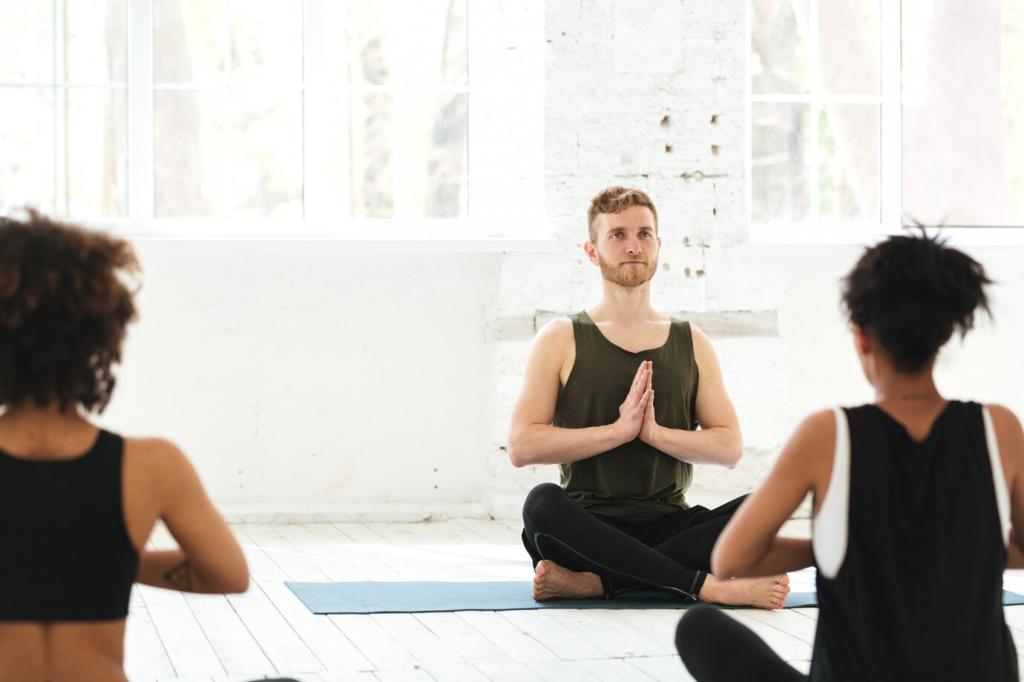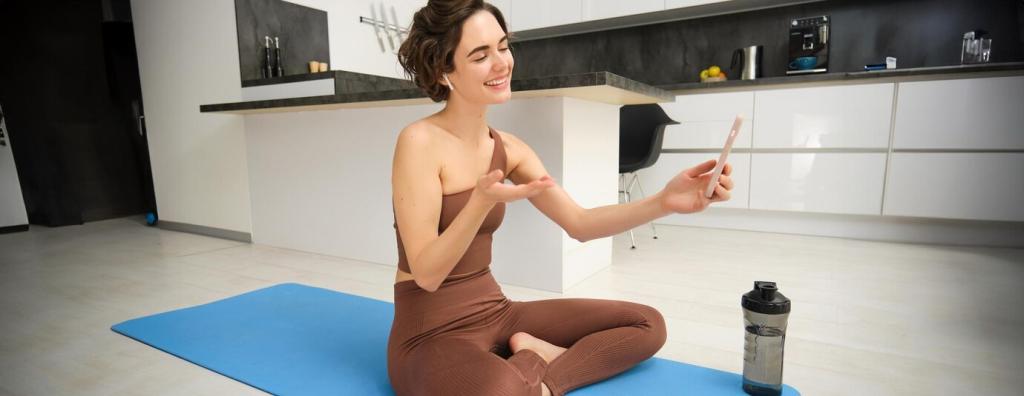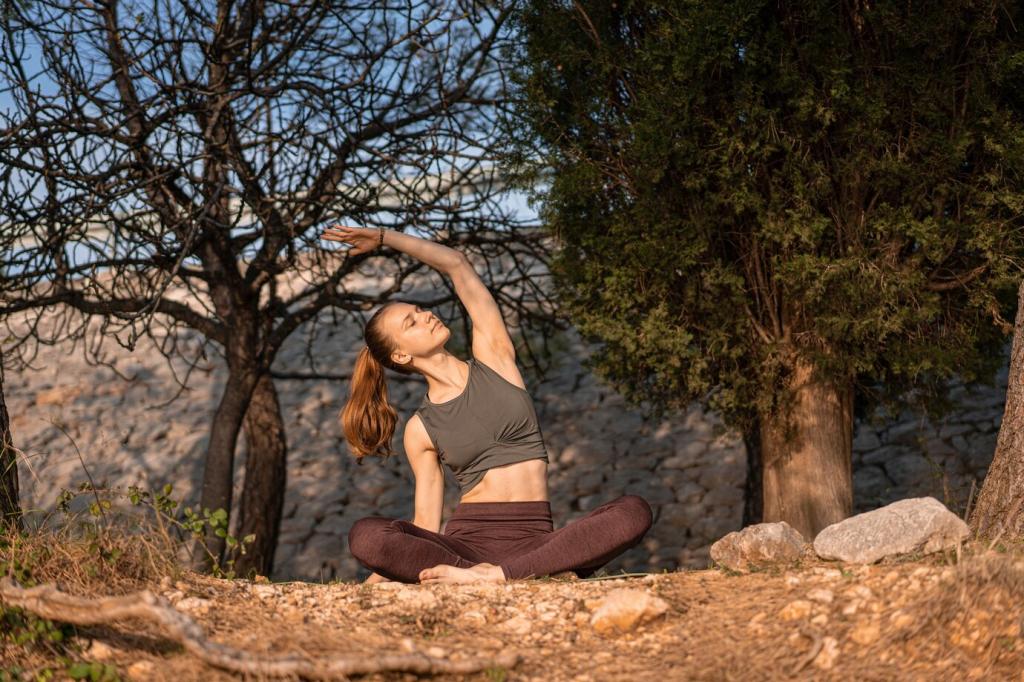Yoga Routines for Cardiovascular Endurance: Flow Stronger, Breathe Deeper
Chosen theme: Yoga Routines for Cardiovascular Endurance. Welcome to a heart-forward practice where rhythm, breath, and mindful movement build lasting stamina. Join our community, subscribe for weekly flows, and tell us how your heart feels after today’s session.



How Yoga Builds Cardiovascular Endurance
In cardio-focused yoga, breath sets the pace. Use nasal inhalations and steady exhales to structure simple intervals—four rounds of vigorous flow, then one breath-focused recovery. This keeps intensity manageable, maintains form under fatigue, and gradually conditions your heart without sacrificing the joint-friendly elegance of mindful movement.
How Yoga Builds Cardiovascular Endurance
Match transitions to a steady tempo—think metronome cues or the rhythm of your steps. Aim for a conversational breath test: you can speak a sentence, but prefer not to. That zone supports endurance. When breath gets choppy, downshift the pace, recover, and re-enter the flow with renewed precision.
Beginner Routine: 20-Minute Heart-Pump Flow
Start with three minutes of nasal breathing, expanding ribs laterally. Add Cat-Cow, spinal circles, and shoulder rolls to mobilize joints. Practice a four-count inhale, six-count exhale to anchor calm energy before effort. This establishes a stable foundation so intensity rises smoothly, never abruptly overwhelming your system.
Intermediate Routine: 40-Minute Endurance Ladder
Ladder Structure That Sustains
Start with a short sequence—Plank, Down Dog, Low Lunge, Crescent. Repeat twice, then add Warrior II. Repeat, then add Reverse Warrior and Extended Side Angle. Keep nasal breathing, smooth transitions, and minimal pauses. The ladder format expands duration without spiking intensity, perfect for cultivating true endurance.
Pose Selection for Efficient Load
Choose poses that create continuous demand without strain: Warrior flows, Chair Pose with calf raises, Crescent to airplane transitions, Dolphin, and Boat variations. Emphasize controlled eccentric lowering and quick but quiet step-backs. This blend encourages muscular endurance so your heart works efficiently rather than erratically.
Measure Progress Thoughtfully
Track rate of perceived exertion on a simple scale of one to ten, aiming for five to seven during long sets. Optional heart-rate monitoring is helpful, but the talk test remains reliable. Record weekly total minutes of continuous flow. Celebrate small gains—extra cycles, calmer breath, steadier mind—then share updates.
Outdoor Cardio Yoga: Let Nature Pace You
Create a loop: Sun Salutation at the entrance, Warrior sequence by the trees, Step-Up intervals on a safe stair set, then balancing poses near a bench. Listen to leaves and footfalls as your metronome. Adapt breath to the breeze, keeping your exhale slightly longer to regulate intensity naturally.
Outdoor Cardio Yoga: Let Nature Pace You
Sand adds gentle resistance, encouraging mindful foot placement and ankle stability. In warm weather, shorten intervals, hydrate early, and protect skin. Backyard flows are equally potent: mark corners for stations, rotate poses each round, and enjoy the grounded feel of grass underfoot while your heart hums steadily.
Outdoor Cardio Yoga: Let Nature Pace You
Maya began after an ankle sprain, swapping sprints for hilltop salutations. She climbed slowly, flowing at each overlook, counting breaths instead of minutes. Six weeks later, her weekend hikes felt easier and her mood lighter. Share your own trail tale below—your experience can inspire someone’s first confident step.
Strength That Supports Your Heart
Hold Warrior II for thirty to forty-five seconds while pulsing the back thigh. Add wall sits between vinyasa rounds. These isometrics build muscular endurance, stabilize joints, and reduce wasted effort. The result: smoother breathing, cleaner transitions, and intensity that feels sustainable rather than spiky or erratic.

Recovery, Fuel, and Consistency
Downshift to Recover
Close with box breathing, Legs-Up-the-Wall, or a ten-minute yoga nidra. Keep one full rest day each week. Notice signs of readiness—rested wake-up, steady mood, willing curiosity. Recovery strengthens the heart’s adaptability, ensuring tomorrow’s flow feels inviting instead of demanding or discouraging.
Fueling Your Flow
Before practice, choose an easy snack—banana, yogurt, or toast with nut butter—and hydrate with a pinch of electrolytes if warm. Afterward, combine protein and carbohydrates to replenish. Caffeine can help, but keep it moderate. Track what feels best and share your go-to fuel in the comments.
Build a Habit You Love
Anchor flows to an existing routine—after morning coffee or post-work walk. Create a playlist that supports your pace, and set gentle reminders. Invite a friend, or join our newsletter for weekly cardio-yoga plans. Comment with your preferred practice time and we will cheer you on.
